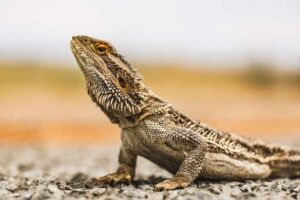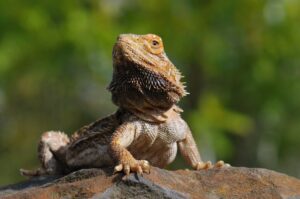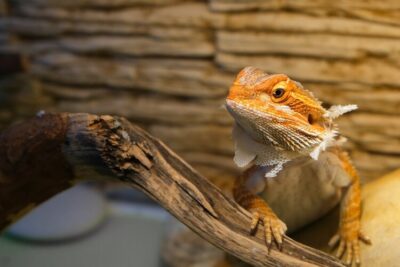How often do bearded dragons shed? is a question that often pops up in the minds of those who are fascinated by these captivating reptiles. Bearded dragons, known for their distinct appearance and captivating demeanor, undergo shedding as a natural part of their growth and development process.
Shedding, scientifically termed as ecdysis, is a vital aspect of a bearded dragon’s life cycle, allowing them to discard old skin and accommodate their growing bodies. Understanding the shedding frequency of bearded dragons is crucial for their overall health and well-being.
In this article, we delve into the intricacies of shedding in bearded dragons, shedding light on the frequency, factors influencing shedding, and how to ensure a smooth shedding process for these beloved reptiles.
Importance of shedding for reptiles

Shedding, or ecdysis, is a critical process for reptiles, including bearded dragons, with significant importance for their overall health and well-being. Here’s why shedding is essential for reptiles:
- Growth and Development: Shedding allows reptiles to accommodate their growing bodies. As reptiles grow, their skin does not expand like mammalian skin but instead is shed periodically to make way for new, larger skin.
- Removal of Old or Damaged Skin: Shedding enables reptiles to remove old, worn-out, or damaged skin. This shedding process helps them get rid of parasites, dead skin cells, and any injuries or irritations on their skin, ensuring optimal skin health.
- Hydration and Moisturization: Shedding helps reptiles maintain proper hydration levels and skin moisture. During shedding, a new layer of skin underneath the old one is revealed, which is often more vibrant and hydrated. This new skin layer ensures that reptiles can effectively regulate their hydration levels and maintain skin health.
- Improved Sensory Perception: Shedding also enhances sensory perception in reptiles. The shedding process removes old skin layers that may have accumulated dirt, debris, or other substances, allowing reptiles to better detect their surroundings through touch, sight, and other sensory mechanisms.
- Behavioral and Physiological Health: Proper shedding is indicative of a reptile’s overall health. Regular shedding suggests that the reptile is adequately hydrated, receiving proper nutrition, and living in suitable environmental conditions. Conversely, irregular shedding or difficulty shedding may signal underlying health issues, such as dehydration, nutritional deficiencies, or improper habitat conditions.
- Prevention of Infections and Health Complications: Incomplete shedding or retained shed skin can lead to health complications such as skin infections, constriction injuries, and impaired mobility. Regular shedding ensures that reptiles can effectively remove old skin layers, reducing the risk of these potential health problems.
Overall, shedding is a fundamental aspect of a reptile’s biology, serving various purposes essential for their survival and well-being. Providing appropriate care and environmental conditions that support natural shedding processes is crucial for maintaining the health and vitality of reptiles like bearded dragons.
Understanding Shedding in Bearded Dragons
Understanding shedding in bearded dragons is crucial for their overall health and well-being. This process, known as ecdysis, is a natural and necessary part of their life cycle. Shedding enables bearded dragons to grow, maintain healthy skin, and regulate their hydration levels. Here are key aspects to consider:
- Frequency: Bearded dragons shed their skin regularly throughout their lives. Juvenile dragons shed more frequently than adults, typically every 4-8 weeks. As they mature, shedding frequency decreases to approximately every 1-3 months.
- Signs of Shedding: Before shedding, you may notice subtle changes in your bearded dragon’s behavior and appearance. Their skin may appear dull or cloudy, and they might become less active or have reduced appetite. As shedding approaches, their skin may begin to lift or peel in certain areas.
- Process: During shedding, bearded dragons shed their skin in patches or pieces. They often start shedding around the head and neck region before moving down the body. Shedding can take several days to complete, and dragons may rub against surfaces or objects to help loosen the old skin.
- Hydration and Humidity: Adequate hydration and humidity are crucial for a smooth shedding process. Ensure your dragon has access to clean water for drinking and may benefit from occasional misting to maintain humidity levels in their enclosure. A lack of hydration or low humidity can lead to difficulties in shedding and may result in retained shed skin or other health issues.
- Assistance and Care: While shedding is a natural process, you can support your bearded dragon by providing a suitable environment and diet. Ensure their enclosure has appropriate substrate, hides, and basking spots. Additionally, offering baths or providing a shallow water dish during shedding can aid in loosening the old skin.
- Monitoring Health: Keep an eye on your bearded dragon’s shedding patterns and overall health. If shedding becomes irregular, prolonged, or difficult, it may indicate underlying health issues such as dehydration, improper diet, or inadequate habitat conditions. Consulting a reptile veterinarian is advisable if you notice any concerns or abnormalities.
Understanding shedding in bearded dragons allows you to provide optimal care and support for your pet’s well-being. By ensuring they have the right conditions and attention during the shedding process, you can help them maintain healthy skin and thrive in captivity.
Shedding Process in Bearded Dragons



